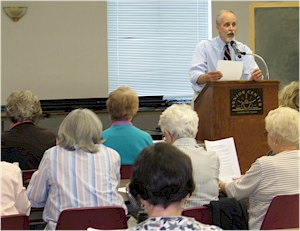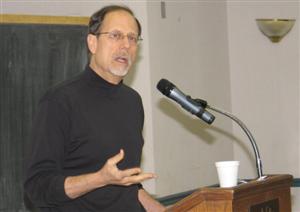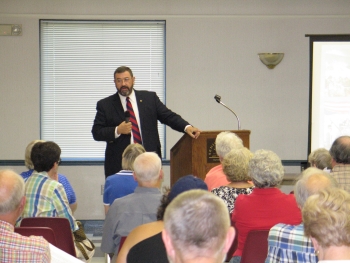
Rick Britton
Regular listeners of our podcast or our live streaming feed might know Rick Britton. He’s a historian and cartographer and a frequent guest on WINA’s Charlottesville Right Now with Coy Barefoot. Rick also organizes a Civil War lecture and day-trip series in conjunction with the Charlottesville Senior Center.
On Wednesday, May 20th, Rick Britton himself gave a presentation on the June 11–12, 1864, Battle of Trevilian Station fought in Louisa County, Virginia. Often called the Civil War’s "largest all-cavalry battle," Trevilians pitted Union Gen. Philip Sheridan—that "bandy-legged Irishman"—and his 9,300 cavalrymen against Confederate Gen. Wade Hampton, perhaps the South’s wealthiest plantation owner, in command of about 6,700. The Southern victory saved Charlottesville from "Little Phil’s" raiders and made quite a name for Hampton.
This is part two of a seven part series. The event is held every third Wednesday at the Charlottesville Senior Center.


 Regular listeners of our podcast or our live streaming feed might know
Regular listeners of our podcast or our live streaming feed might know Regular listeners of our podcast or our live streaming feed might know
Regular listeners of our podcast or our live streaming feed might know Regular listeners of our podcast or our live streaming feed might know
Regular listeners of our podcast or our live streaming feed might know Charlottesville historian and author
Charlottesville historian and author